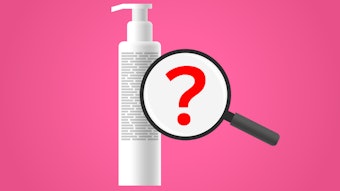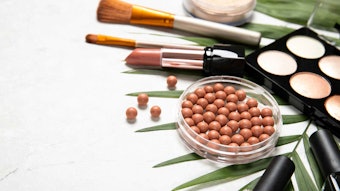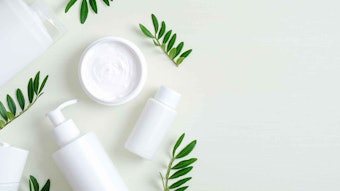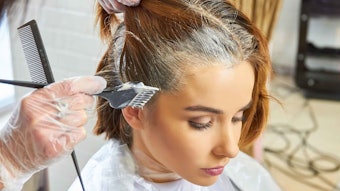
Can you imagine if consumers read cosmetic product labels disclosing full chemical names rather than general INCIs?
Based on the current chemophobic environment, nothing would sell; not even life's most essential element: "dihydrogen monoxide" or hydrogen oxide (H2O). But such nomenclature generalizations seem to have initiated the vicious cycle (and yet human behavior) of lumping what appears to be like-for-like into categories of "good" and "bad" ingredients; in my view, perpetuating the free-from cosmetic phenomenon.
This seems to occur when misinformed or nontechnical groups and organizations attempt to play in a technical space, further confusing consumers. There is also the case of nontechnically trained regulators stepping in to make irrelevant rules. Add to this the fact that, as many of you know, one INCI name or even very similar INCI names clearly do not fully represent all the ingredients that bear that name (I cannot imagine all the Rachels out there being blonde, 40-something years old and American) and now you have the perfect storm for confusion... and guilt by association.
Like for Like
Take sodium laureth sulfate and sodium lauryl sulfate, for example. Sodium lauryl sulfate is drying and irritating to skin, as most formulators know; it is even used to induce irritation to test products for anti-irritant properties. Sodium laureth sulfate, on the other hand, is relatively gentler to skin... yet consumers demand sulfate-free solutions.
Silicones are another example. Cyclomethicones are restricted to limited amounts—and in rinse-off applications only, in the U.K., due to concerns over persistence—but most formulators know the same does not pertain to all silicones; of course, consumers do not. The current recommendation is to restrict octamethylcyclotetrasiloxane (D4) and decamethylcyclopentasiloxane (D5) to less than 0.1% across all rinse-off products. Restrictions for leave-on applications are also being considered, although these treat D4, D5 and D6 as the same materials.
Furthermore, safety reviews have already concluded that D5 (with less than 1.0% D4 content) and D6 are safe for leave-on cosmetics; D4 is no longer formulated into leave-on cosmetics except as an unavoidable by-product. As such, any proposed leave-on restrictions concerning cyclomethicones D5 and D6 are not warranted.
Regardless, all silicones are viewed the same by consumers and generally are undesirable. As such, silicone replacements are in demand.
Playing the Name Game
On a fundamental level, product manufacturers need to play on a level field, so it is good that the INCI nomenclature provides a framework to easily compare somewhat similar products. Also, can you imagine the full disclosures of complete chemical names on the back of a lipstick box? But NGOs and other organizations are interested in playing, too, and not always using INCIs consistently or accurately.
As Elizabeth A. Grove, global director of sustainability and compliance at Lubrizol Life Science explained, "There is a growing trend with consumer magazines, NGOs and shopping apps to use INCI names as a way to identify personal care ingredients that pose environmental harm." However, as explained, INCI names are generalized, so ingredients that pose no environmental harm are equated with those that do.
Grove gave an example with microplastics. While there is a strong drive to omit microplastics from personal care to protect the environment, ingredients that have the same INCI name of acrylate polymer often are used as thickeners in gel or liquid forms, too; and these do not negatively impact the environment
"Not all ingredients with the name acrylate polymer would be a solid microplastic. But putting the generic INCI name 'Acrylate Copolymer' on a list to identify microplastics means that all forms of these ingredients will be wrongly identified as microplastics," explained Grove.
In fact, according to Grove, based on this INCI name, several commercial shopping apps have wrongfully flagged products as containing microplastics, which has not only hurt the sales of all acrylate polymers, but also misled consumers.
“Manufacturers of acrylate polymers, including Lubrizol, have been negatively affected," said Grove, who added, "The INCI Committee has acknowledged this confusion."
The Solution?
It is difficult to envision full chemical disclosures as the answer. In fact, in the opposite direction, one of our advisers recently suggested shortening existing lists even further.
"... Why not list on the package only the ingredients that may be of importance for consumers to know before purchasing, then require the product website to provide not only the full ingredient disclosure, but their functions in the product?" proposed Karl Laden, Ph.D., of Alpa Cosmetics, in a recent article.
"I recognize that it would require considerable consumer, government and industry agreement on what ingredients would be required on the label versus on the website. However, I believe the consumer would truly benefit."
Could we adapt this approach to include full chemical names, I wonder? We would then, of course, need to include patent references to protect the IP. While I am not sure of the right answer, I am sure of one thing: consumers are getting smarter. And they are taking great interest in their health and wellness. So it is in the industry's best interest to self-scrutinize, and properly educate and inform before someone else does.










